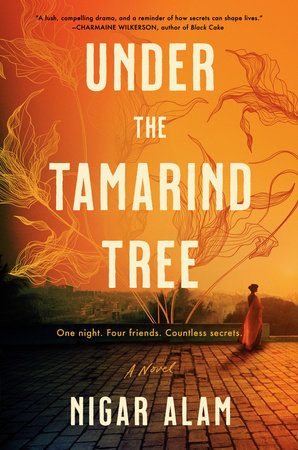Under the Tamarind Tree: A Novel
- By Nigar Alam
- G.P. Putnam’s Sons
- 320 pp.
- Reviewed by Ananya Bhattacharyya
- October 24, 2023
The fallout from Partition echoes through four friends’ lives.

In the prologue of Nigar Alam’s debut novel, Under the Tamarind Tree, it’s 1947, and protagonist Rozeena is 9 years old. The British have left the subcontinent, but only after detonating one last eruption in their wake: Partition. When violence breaks out in Delhi, Rozeena and her parents flee from their home, but in the confusion and rush, her brother gets left behind. The tragedy that befalls him will leave its mark on the family for generations.
Eventually, they settle down in the coastal city of Karachi, Pakistan, where tens of thousands of Muslim immigrants from India end up. Much of the story revolves around the house Rozeena’s parents were able to claim as their own. The novel, in part, explores how people who start from scratch in a new place can reinvent themselves in a way that wouldn’t have been possible without turbulent circumstances. But this reinvention is not without a cost.
The author pens a letter to readers at the very beginning of the book: “Today, about one-fifth of the world’s population lives in regions that were affected by Partition. Its impact continues to ripple through generations and politics. Perhaps the first step to betterment is recognizing that trauma exists at the individual level.” Whether or not a novelist can heal the scars of a society, telling stories about such trauma is surely a worthy goal.
The bulk of the narrative takes place in 1964 and focuses on Rozeena, who is now a pediatrician, and her three neighborhood friends, Aalya, Zohair, and Haaris. Aalya, a next-door neighbor and practically a little sister to Rozeena, and Zohair — who is not as well fleshed out as the others — seem to have a special connection, although we only see hints of their blossoming relationship. What is clearer is the mutual attraction felt between Rozeena and the wealthy Haaris. But something stands in the way of both these connections: class and class consciousness, which permeate the book.
The novel also revisits another theme again and again: Several characters ask, “Log kya kahengay?” or “What will people say?” And they don’t just utter the words; they act as if the question is an injunction they must live by. It’s this attitude of judgment and fear of judgment that create the central drama of the story. All four young people get entangled in an ugliness they couldn’t have foreseen and that they don’t deserve.
While Alam’s writing is unfussy, which works well for the most part, one of the novel’s shortcomings is that its nail-biting drama ignites only after the reader has trudged through a good one-third of the book. Eventually, though, one event leads to the next in a way that creates a fascinating, unstable Jenga tower of plot points.
The story alternates between “Then” chapters set in the 1960s and “Now” chapters set in 2019. The modern-day bits feel far less dramatic than the propulsive action of 1964. By 2019, an elderly Rozeena has formed a friendship with Haaris’ granddaughter, Zara, while reevaluating the past. It’s a bit of a mystery why Zara likes spending so much time with an octogenarian, and their relationship comes across as forced, no matter how many samosas they devour together.
But whether it is “Now” or “Then,” thankfully, Rozeena is an easy companion to spend time with — quiet and strong, and forging a life worth living even as she’s denied the life she wanted. Among many other things, Under the Tamarind Tree is an unassuming paean to female strength and independence.
Ananya Bhattacharyya is a Washington-based editor and writer. Her work has been published in the New York Times, Guardian, Lit Hub, Baltimore Sun, Al Jazeera America, Reuters, Vice, Washingtonian, and other publications.